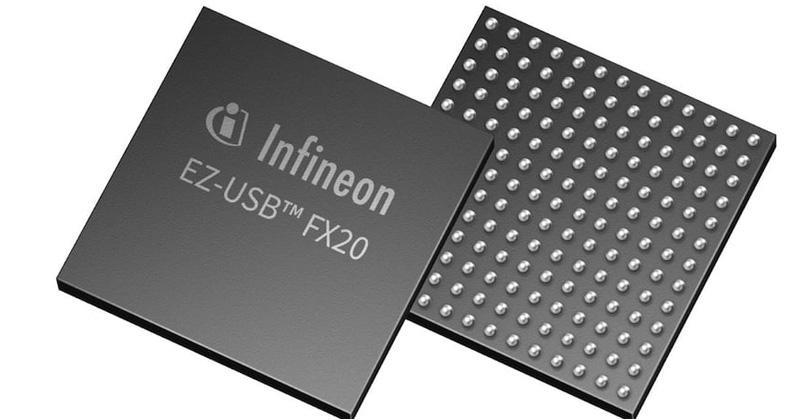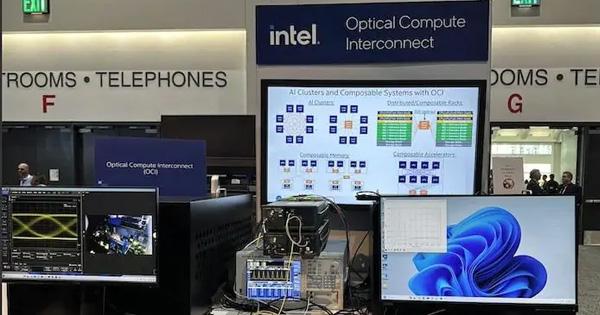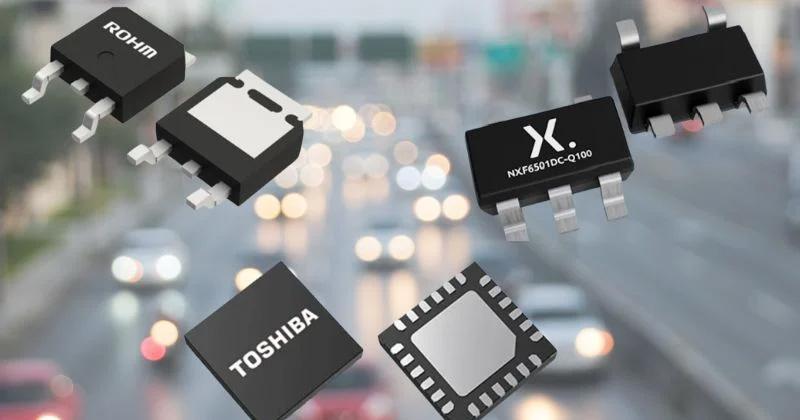ST Rolls Out Configurable Power-Management IC for Automotive MCUs
STMicroelectronics recently announced the SPSB100, a power management IC (PMIC) designed to support highly integrated processors in vehicles. The release is a direct result of the automotive industry's trend toward increasingly complex electrical architectures.
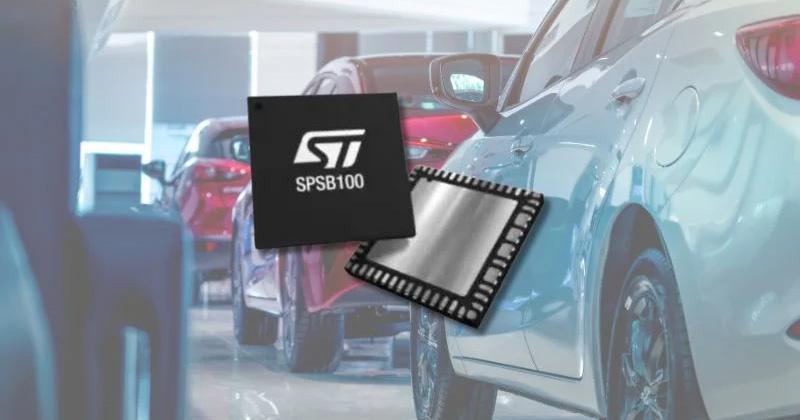
The SPSB100 PMIC. Image (modified) used courtesy of STMicroelectronics
For example, advanced driver-assistance systems (ADAS), electrified powertrains, and infotainment features all demand precise power delivery, robust thermal management, and compliance with strict functional safety standards. Such demands push engineers to adopt integrated solutions that guarantee higher levels of reliability while also optimizing system efficiency and design simplicity. How does the SPSB100 align with these goals?
ST Targets Automotive Constraints With New PMIC
The SPSB100 (link downloads PDF of datasheet) is an advanced automotive power management integrated circuit designed to support highly integrated vehicle processors. The device's architecture features three configurable synchronous buck converters with peak switching currents up to 6 A, operating at 2.4 MHz for high efficiency or 400 kHz for lower thermal dissipation. Additionally, it integrates a boost controller to handle transient low battery conditions, such as deep cranking pulses, ensuring stable operation.
The IC's power management capabilities are augmented by two linear voltage regulators, one offering 5 V at 120 mA and another that tracks reference voltages with a ±10-mV precision for dynamic load conditions. The device also includes fail-safe mechanisms such as overcurrent, undervoltage, and overtemperature protections for all power stages, along with diagnostic features via SPI communication.
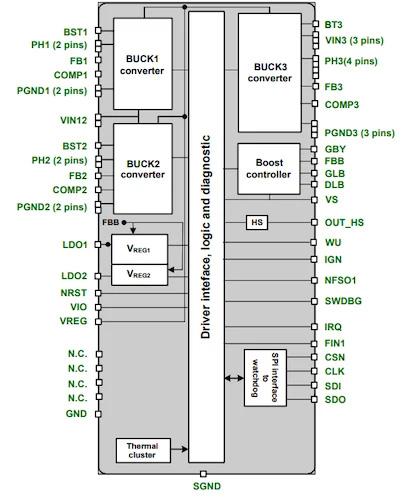
SPSB100 block diagram. Image used courtesy of STMicroelectronics
Thermal management is a clear focus of the design, with temperature warnings and shutdown thresholds distributed across multiple clusters for precise thermal response. An additional highlight is its ability to transition between full-power and low-power modes; interrupt systems and a watchdog timer ensure functional safety compliance in line with ISO 26262 standards.
Packaged in a compact VFQFN56+4L form factor, the SPSB100 operates across a wide voltage range (3 V–29 V for input and boost stages) and supports automotive-specific requirements with AEC-Q100 qualification.
The Complexity of Automotive Power Management
One of the primary challenges of automotive power management is ensuring stable power delivery during dynamic conditions such as cold cranking or transitioning between active and low-power modes. Cold cranking can cause significant voltage dips, jeopardizing the operation of systems. Meanwhile, achieving ultra-low power consumption in idle states, like deep sleep, is necessary for preserving battery life, especially in electric vehicles. This dual demand for high current capability during peak loads and minimal quiescent current during standby places immense stress on power management architectures.
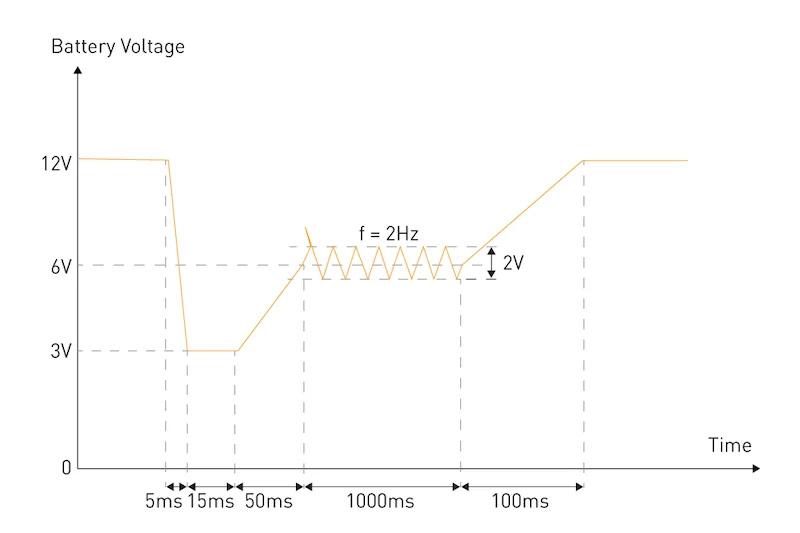
Cold-cranking waveform. Image used courtesy of Monolithic Power Systems
Thermal management further complicates the equation. Automotive-grade components must dissipate heat efficiently, often under constrained space conditions. Poor thermal performance can lead to overheating, reduced efficiency, and component degradation, necessitating advanced thermal monitoring and mitigation mechanisms.
By the same token, functional safety and reliability are non-negotiable in automotive applications, with standards such as ISO 26262 mandating rigorous measures to prevent system failures. Power management systems must include features like overcurrent, overvoltage, and thermal protections to safeguard sensitive electronics while adhering to these safety standards.
Simplified Automotive Power Design
The need for compact, reliable, and scalable power management solutions grows as vehicles evolve with electrified powertrains, advanced processors, and increasingly dense electronic systems. ST designed the SPSB100 to bridge the gap between efficiency and functionality, allowing manufacturers to address the industry's challenges without overcomplicating their designs.
The SPSB100 is available now in an 8 mm x 8 mm VFQFN56 package.


